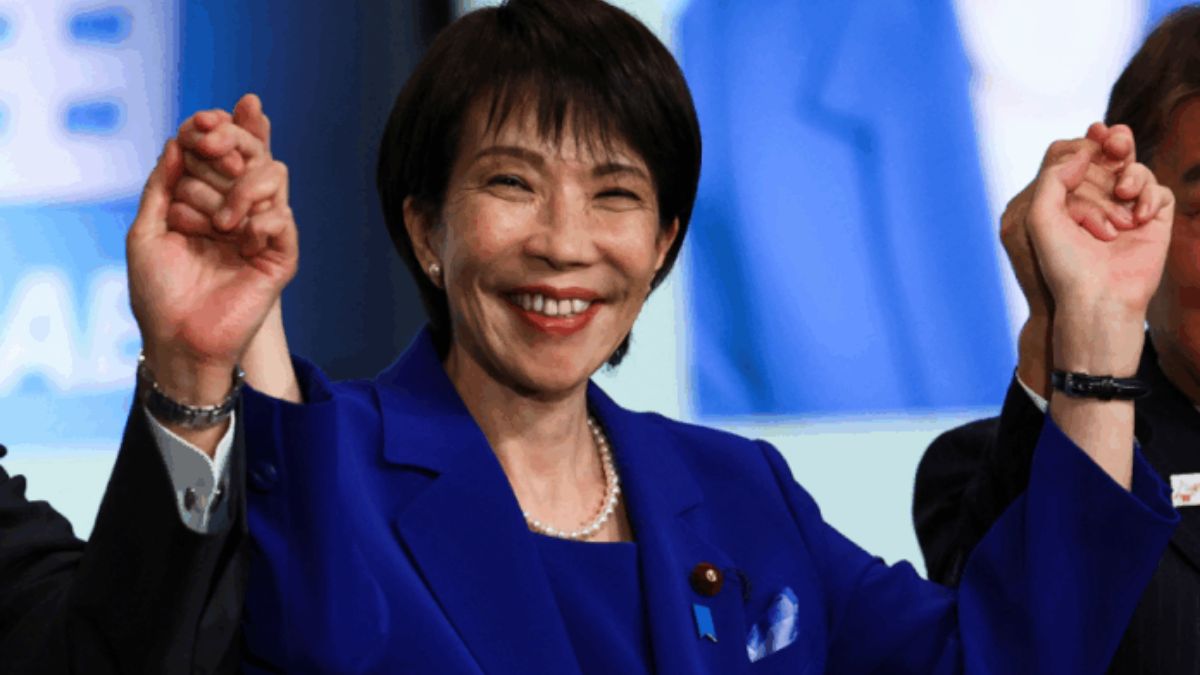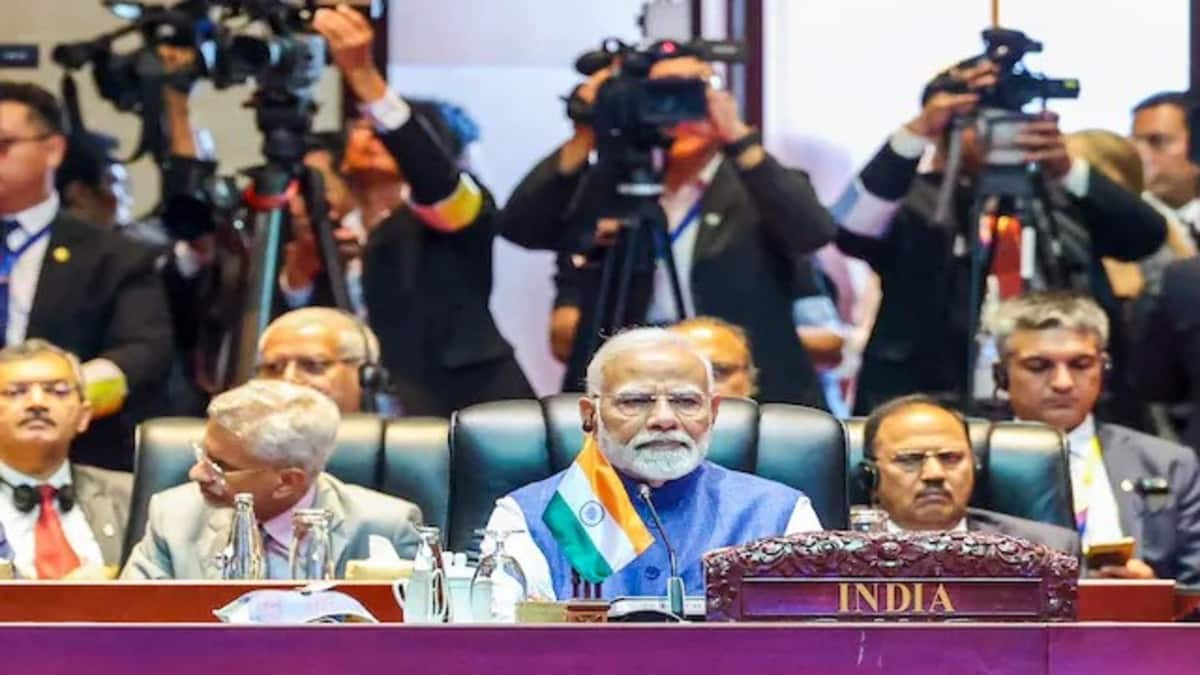For the first time in its postwar history, Japan has elected a woman to lead its ruling Liberal Democratic Party (LDP). Sanae Takaichi, a conservative politician long associated with the nationalist right wing of Japanese politics, has won the party presidency, defying expectations. If, as expected, the Japanese Diet endorses her in its forthcoming vote of confidence, she will become Japan’s first-ever female Prime Minister—nearly eight decades after the end of World War II.
This moment is historic, but it has not come easily. Japanese politics has long been dominated by male-centric networks, factional hierarchies, and entrenched traditions that have sidelined women. Despite Japan’s high levels of modernisation and education, it lags significantly behind other advanced democracies in terms of female political representation. Takaichi’s election is therefore more than a party contest result—it is a watershed moment in the gendered and political history of Japan.
She emerged victorious over a strong field of competitors, including Chief Cabinet Secretary Yoshimasa Hayashi, 64; former economic security minister, Takayuki Kobayashi, 50; agriculture minister, Shinjiro Koizumi, 44; and former LDP Secretary-General Toshimitsu Motegi, 69. That she triumphed against these veteran male politicians underscores her ability to build alliances within the party and appeal to an electorate seeking stability but also a break from convention.
Once a drummer in a college heavy metal band, Sanae Takaichi often points to Margaret Thatcher as her political role model. Much like Thatcher, she projects toughness, determination, and an aversion to compromise when she believes core values are at stake. She has shown little interest in pushing for progressive gender reforms, even though her election itself represents a groundbreaking moment for Japanese women.
Impact Shorts
More ShortsOn gender issues, Takaichi sits firmly on the right wing of an already conservative LDP. She opposes revising the 19th-century Civil Code that requires married couples to share the same surname, which leads women to take their husband’s name. Critics say her position perpetuates structural inequality, but Takaichi has been unapologetic, arguing that tradition should not be upended lightly. As she herself admitted, this is an issue that “probably won’t be resolved during her term”.
Her election nonetheless gives Japan symbolic progress in global rankings. In the World Economic Forum’s 2025 Gender Gap Report, Japan ranked 118th out of 148 countries, largely due to women’s under-representation in government. Takaichi’s rise, while not necessarily transformative in terms of feminist policy, does offer the possibility of expanding women’s roles in political decision-making.
Ideologically, Takaichi is considered an arch-conservative, closely aligned with the late Shinzo Abe’s legacy. She has consistently visited the Yasukuni Shrine, which honours Japan’s war dead, including convicted war criminals. These visits are controversial in China and South Korea, which view the shrine as a symbol of Japan’s militarist past. Yet domestically, these acts reinforce her nationalist credentials and appeal to conservative voters who value a strong defence of Japan’s traditions.
On defence policy, Takaichi advocates boosting defence spending to at least 2 per cent of GDP by 2027 and above Japan’s long-standing 1 per cent ceiling. She pledged to expand domestic defence production, with the aim of positioning Japan as a regional supplier of security equipment. Her tough stance has already had economic ripple effects: stocks of Japanese defence companies rose sharply after her victory, signalling market confidence in her commitment to military buildup.
While hawkish on defence, Takaichi is more pragmatic on the economy. Earlier in her career, she supported aggressive fiscal expansion through deficit bonds, echoing “Abenomics”. More recently, however, she has adopted a cautious stance, wary of Japan’s ballooning public debt. She remains open to revising the consumption tax but emphasises her priority is to restore the LDP’s credibility after electoral setbacks and reassure citizens that the party can handle everyday concerns: rising living costs, stagnant wages, and job security.
Takaichi’s work ethic also distinguishes her leadership style. She has dismissed the idea of “work-life balance” for herself, stressing instead her willingness to work relentlessly for Japan. She expects her cabinet colleagues to show the same dedication. This no-nonsense approach resonates with both working-age citizens and elderly voters, two groups crucial to the LDP’s electoral base.
Beyond defence and economics, Takaichi has leaned into nationalist anxieties. She has spoken out against what she sees as the unchecked influx of foreign workers and mass tourism, which resonates particularly in her home constituency of Nara Prefecture, where overtourism has strained cultural sites. While her rhetoric risks alienating international partners and undermining Japan’s reputation as an open society, it appeals to voters wary of globalisation and increasingly drawn to populist alternatives.
As the first woman to lead the LDP, Takaichi faces not just political expectations but also gendered scrutiny. Symbolically, her election is a breakthrough moment. Substantively, however, she must prove that her leadership is not tokenistic but capable of delivering concrete results. Many commentators suggest public expectations are “even greater because she is a lady”, highlighting the double standard that will shape perceptions of her tenure.
Takaichi’s immediate challenge is to consolidate the LDP, restore its credibility, and prepare for upcoming electoral tests. During her campaign, she acknowledged the party’s struggles, remarking, “The first priority is to provide a clear answer to the sentiment many citizens are expressing: they don’t understand what the LDP actually wants to achieve as a party.”
She must also keep the ruling coalition intact. The LDP has long relied on its partnership with the smaller but influential Komeito party. Takaichi has attempted to reassure Komeito by affirming that coalition ties remain fundamental while also signalling her intent to broaden the coalition before parliament selects the next prime minister. This balancing act will be critical in a Diet where the LDP lacks outright majorities in both chambers—a rare situation for the party since its founding in 1955.
On the global stage, Takaichi inherits a fraught environment. She must balance ties with the United States, navigate strained relations with China and South Korea, and uphold Japan’s leadership role in the Indo-Pacific at a time of growing US-China rivalry. Her nationalist credentials may strengthen her hand domestically, but they could complicate diplomatic efforts abroad.
Her election comes at a difficult moment for Japan. The country is contending with new US tariffs, inflation that is squeezing household budgets, sluggish global trade, and structural challenges from an ageing and shrinking population. Ballooning social security costs further constrain Japan’s fiscal outlook. Takaichi must chart a path that balances immediate economic anxieties with long-term structural reforms—a daunting task for any leader, let alone the first woman in Japanese history to hold the role amid persistent gender bias. Trump is expected to visit Japan later this month.
Sanae Takaichi’s election is a historic turning point for Japan. She has shattered a glass ceiling that stood firm for seven decades, but she does so not as a liberal reformer but as a conservative hawk, firmly rooted in the Abe legacy. Symbolically, her rise is a triumph for women in Japanese politics. Substantively, it reflects the LDP’s calculation that a hawkish conservative woman could both revitalise its base and project strength during turbulent times.
Whether she succeeds in transforming symbolic progress into effective governance will define not only her legacy but also the trajectory of Japanese politics in the coming decade.
The writer is a former ambassador to Germany, Indonesia, Ethiopia, Asean, and the African Union, and the author of ‘The Mango Flavour: India & Asean After 10 Years of the AEP’. The views expressed in the above piece are personal and solely those of the author. They do not necessarily reflect the views of Firstpost.


)

)
)
)
)
)
)
)
)



